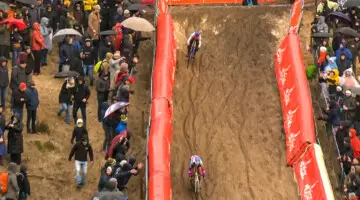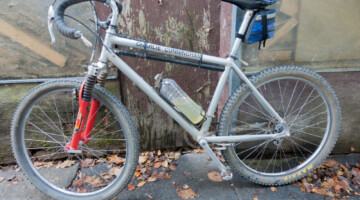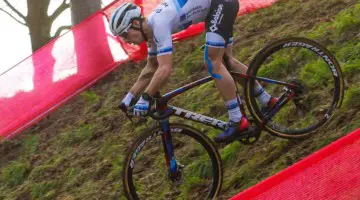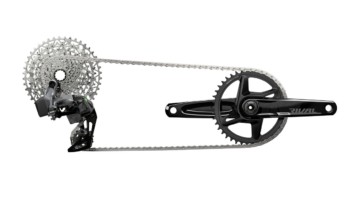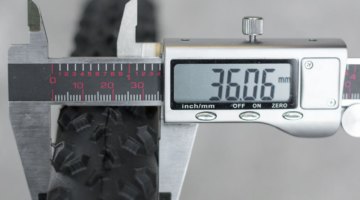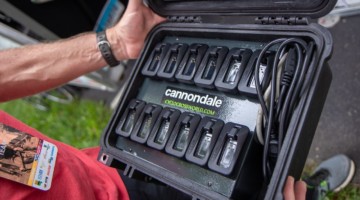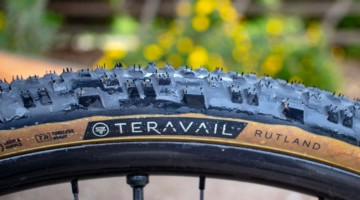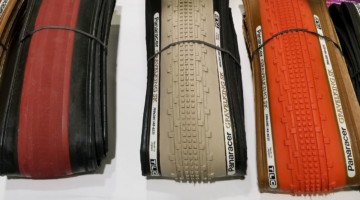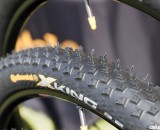
What will you be riding this season? Here's a sneak peak at Continental's new 2013 cyclocross tubular.
It’s June, so the cyclocross season is less than three months away. That means it’s time to start thinking about what wheels and tires you’ll be using come September, and looking at repairing old ones, gluing up new wheels and a whole host of other tire-related issues. So for today, we’re looking back at all of the Mechanical Monday columns we’ve done that talk about tires, so you have everything you need in one place. Still shopping around for tires? We have a website section for that, and for wheels, too.
Mechanical Monday: Prepping Your Tubulars for Off-Season Storage
Just like good wine, your expensive cyclocross tubulars require a little care and proper storage. “Ridden hard and put away wet” should never be how you describe your equipment at season end. Here are a few tips to help you summer-ize your cyclocross tubulars.
Mechanical Monday: Protecting Your Tubulars
It’s nearly mid-September and by now a good portion of y’all reading this will have raced already or will be prepping to race this next weekend. If you’ve been to your first race you undoubtedly heard the moans of some poor soul who flatted his or her newly glued tubular and can’t believe they have to go through those dreaded steps again. You know, clean, stretch, glue, et cetera! If you’re lucky enough that this poor sap isn’t you, then a little bit more prep work can stave off this scenario.
Mechanical Mondays: Gluing Tubulars
One of the greatest lessons I learned from my first bike shop boss was that as a mechanic, I have the rider’s safety in my hands and I must consider that in every service function I perform. I have found this lesson most poignant in the gluing of tubular tires. Poorly glued tires can have catastrophic consequences for equipment and, unfortunately, for riders as well. What follows is a process and set of rules that I have employed for the past five years, under which I have yet to have a rider roll a tire.
Mechanical Mondays: Gluing Tubular Cyclocross Tires
The first tubular tires were developed for road racing in the early 1900′s as a replacement for the conventional solid rubber tire. Until the development of the high performance clincher tire in the early 1980′s, every serious cyclist was familiar with the process of gluing tires to their rims. Slowly the tubular tire became less and less common on all bikes but the most serious of cyclists. The art of tubular gluing slipped into the darkness, practiced only by the mechanics of top athletes.
Mechanical Mondays: How to Glue a Tubular Tire
How to properly glue a ’cross tubular is perhaps the most covered topic in the cycling media this time of year – it’s practically on the front page of the Internet. So with that in mind, let me tell you how to properly glue a ’cross tubular.
Mechanical Mondays: Gluing Tubies, How Clean Is Clean Enough?
Folks, here’s a shocker: there are several schools of thought when it comes to gluing tubulars and the preparation that goes into it. Actually, this is more of a philosophical and religious conversation … everyone has ideals, thoughts and practices on tubular prep and gluing and will stand by those to the death.
Mechanical Monday: Re-gluing Tubulars
“I have a set of Challenge Grifo’s that I had glued up using the Belgian tape method. If I pull those tires off the rims, can I re-glue those tires for next season? What would I need to do to get the Belgian tape off or do I need to take it off to re-glue them?”
Mechanical Mondays: Repairing Tubular Tires
When you invest in a set of tubular tires, you pray they never flat. Because let’s face it, repairing tubulars is a whole lot of trouble. However, while it’s tempting to just chuck flatted tubulars, there are a few options worth exploring first. The most obvious one is fixing the tire yourself, and it can be done if you’re a little handy with a sewing needle and a patch kit.
Gut-Wrenching Mechanical Mondays: Sealing Tubular Sidewalls with Liquid Urethane
While many tubular cyclocross tires have no need for the application of extra sealant (think of the rigid, robust sidewalls on a Tufo, for example), the more supple and sensitive sidewalls can benefit from extra protection from water absorption. For the ultra-supple, pricey tubulars that feature natural casings made from cotton or silk, like Dugasts and FMBs, some form of sealant is a necessity. Otherwise, get the tires wet often enough, and they’ll start to rot – not what you want to see from some of the most expensive ‘cross tires on the market.
Going Tubeless in Cyclocross
Some rims, like the very popular Mavic Open Pro, have a very deep center channel, also known as a drop channel. Rims with deep drop channels are more prone to burping air under hard cornering. Look at the rim profile on your wheels; deeper interior channels mean you’ll have to build up the inside more to prevent burping. “The idea is to increase the inner diameter of the rim to allow the tire to fit snugly while it is inflating,” says Larson.
Going Tubeless for Cyclocross – Avoiding the Burp, Choosing the Best Tires, and a DIY System
Going tubeless for cyclocross is an attractive option for anyone tired of pinch-flatting clinchers or gluing and re-gluing (or flatting) expensive tubulars. Cyclocross Magazine has long experimented with tubeless tires on our cyclocross bikes, in both cyclocross and mountain bike races, and feel that there are now so many attractive options for putting together a reliable system that it doesn’t have to be a risky experiment.










